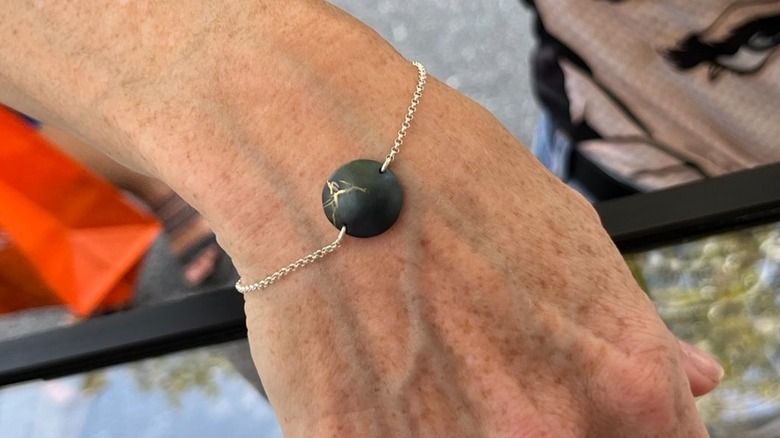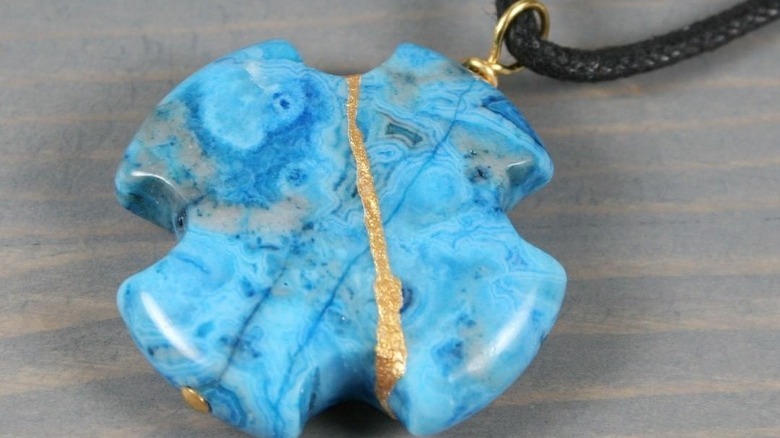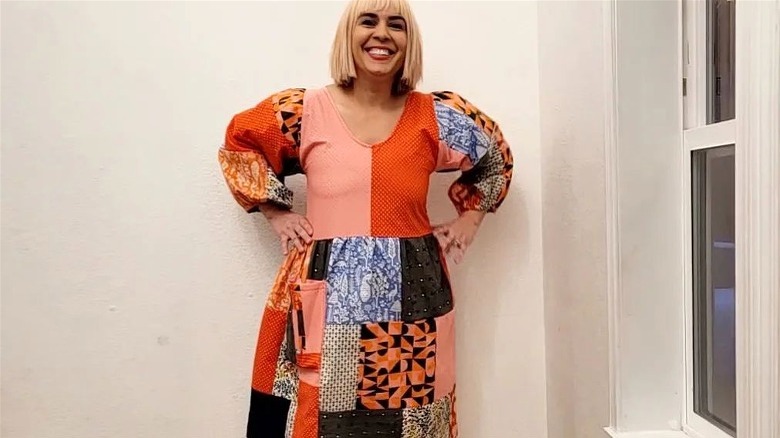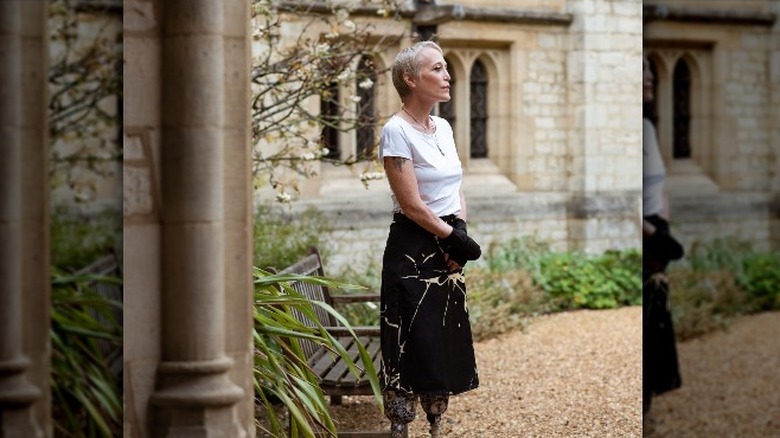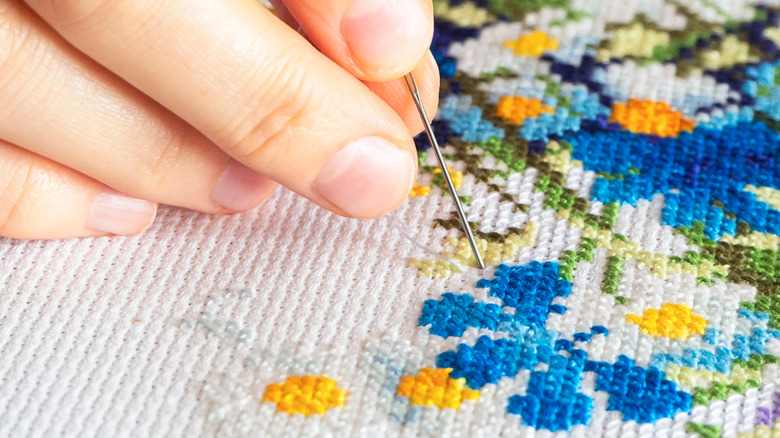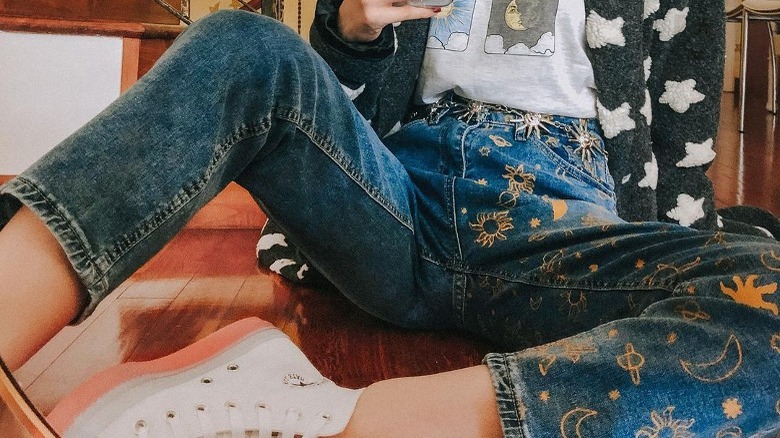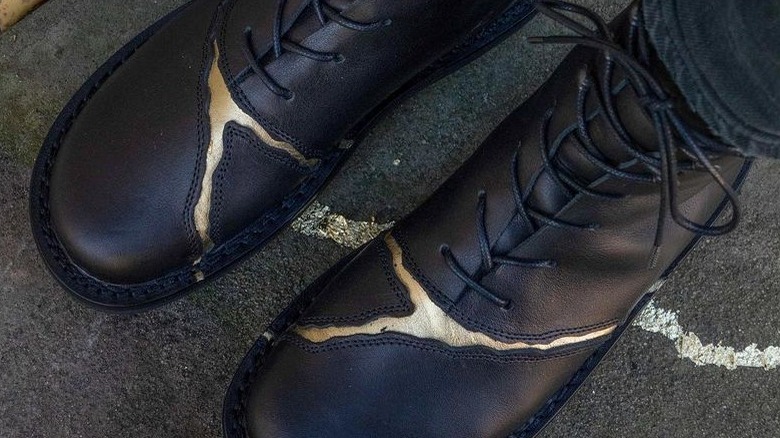How Kintsugi Is Making Its Way Into The World Of Fashion
Japan is home to many traditional art forms that have served as an inspiration for contemporary artists around the world. Among them is kintsugi, the Japanese art of painstakingly gluing broken ceramics together with lacquer and gold pigment. The finished work, with highlighted cracks on full display, gives the once-broken artwork a completely new look. One of the most admired ancient art forms, kintsugi is built on the idea that just because something has defects does not mean it's beyond repair — and you are capable of turning your mess into a message.
Due to its profound philosophical meaning, kintsugi is often sought out as a form of compassionate healing therapy that helps people embrace their failures instead of hiding them. In fashion, this centuries-old technique is gradually gaining a strong foothold, even though what kintsugi stands for is quite the opposite of what fashion looks like nowadays. Sustainability is the core of kintsugi, where nothing goes to waste. While in fast fashion, clothes returned due to defects are usually incinerated or end up in landfills. Fashion jewelry is also getting a bad rap for contributing immensely to toxic waste. For years, the fashion industry has been searching for ways to make sustainable fashion more convincing. And kintsugi just happens to be the perfect sweet spot. Here's why.
Kintsugi in jewelry
The kintsugi repair ritual is being increasingly used to repurpose defective gems into lasting lacquerware. For this process, a skilled lacquer expert would deftly treat the fissure's surfaces with a coating, link the parts together, and then leave the pieced-together gem to set. Final coatings of urushi lacquer can take up to 14 days to dry and require a steady environment with 60% to 80% humidity levels and temperatures between 20 and 25°C for them to fully set. After sanding the lacquer down, gold dust is applied over the lacquered cracks.
Kintsugi in patchwork fashion
When it comes to sartorial designs and aesthetics, the kintsugi technique calls to mind modern patchwork clothing or quiltcore. A traditionally economical technique, patchwork might be used to dramatically reimagine and upcycle clothing, giving it a high-fashion handmade, eclectic vibe, as evidenced in Perry Ellis's 1993 collection by Marc Jacob or Vivienne Westwood's London Fall 2006 collection. Like kintsugi, patchwork also promotes sustainability. The quantity of textile waste all over the world would be greatly reduced if fashion companies incorporated patches into new items made from the leftovers of their collections.
Kintsugi inspires inclusive fashion
For the differently abled community in the U.K, kintsugi is a beacon of fashion inclusivity and emphasis on the uniqueness of individual needs. Inspired by the tenets of kintsugi, British journalist Emma McClelland founded the clothing brand Kintsugi Clothing. The goal is to make it easier for individuals of all ages, sizes, and disabilities to find strategically designed clothing with discreet openings to make getting dressed quick and stylish. Functionality aside, you'll also find many garments with golden lining prints — a nod to the iconic kintsugi cracks.
Kintsugi for mending garments
If you have small holes in your garments, you can fix them using the kintsugi technique, such as patching them with gold thread. The tools used for this task include gold embroidery threads, sewing needles, scissors, and wooden darning mushroom. Do a small series of running stitches circling the hole and keep spinning the mushroom as you go. After completing the circle, do a blanket stitch around it. To make it more secure, go under and make one last stitch at the back. There it is: a little sun-shaped decoration on your revived outfit.
Kintsugi spruces up old jeans
If you're looking for a way to breathe new life into your old jeans, give them a kintsugi treatment. You can use gold threads to embroider some artistic touches to the front and back of your jeans or do some embellishments on the side seams. If stitching is not your strength, you can draw over your jeans with acrylic paint using a thin paint brush. The kintsugi pattern can be as simple as a zigzag crack or something more intricate like a tree branch with tiny flowers sticking out from them.
Kintsugi in shoes
Kintsugi is also a great way to add some highlight to your shoes. You can buy ready-made kintsugi-inspired shoes, or you can create your own version. If your sneaker has a deep scratch or crack, fill it in with a cream polish in a gold color or a gold glue and dust on some gold powder to seal the look. If not, you can still decorate them with the kintsugi patterns by spray painting them or brushing a nice, solid lacquer over the seam lines and finishing off with a layer of gold dust.
